Tea is an aromatic beverage commonly prepared by pouring hot or boiling water over cured leaves of the tea plant, Camellia sinensis. After water, tea is the most widely consumed beverage in the world. It has a cooling, slightly bitter, and astringent flavour that many people enjoy.
Tea likely originated in China during the Shang Dynasty as a medicinal drink. Tea was first introduced to Portuguese priests and merchants in China during the 16th century. Drinking tea became popular in Britain during the 17th century. The British introduced tea to India, in order to compete with the Chinese monopoly on tea.
Tea has historically been promoted for having a variety of positive health benefits, and recent human studies suggest that green tea may help reduce the risk of cardiovascular disease and some forms of cancer, promote oral health, reduce blood pressure, help with weight control, improve antibacterial and antivirasic activity, provide protection from solar ultraviolet light, increase bone mineral density, and have "anti-fibrotic properties, and neuroprotective power." Additional research is needed to "fully understand its contributions to human health, and advise its regular consumption in Western diets."
Consumption of tea (especially green) is potentially beneficial to health and longevity given its antioxidant, flavanols, flavonoids, polyphenols, and catechins content. Tea catechins have known anti-inflammatory and neuroprotective activities, help to regulate food intake, and have an affinity for cannabinoid receptors, which may suppress pain, nausea, and provide calming effects.
Consumption of green tea is associated with a lower risk of diseases that cause functional disability, such as “stroke, cognitive impairment, and osteoporosis” in the elderly.
Tea contains L-theanine, and its consumption is strongly associated with a calm but alert and focused, relatively productive (alpha wave dominant), mental state in humans. This mental state is also common to meditative practice.
The phrase "herbal tea" usually refers to infusions of fruit or herbs made without the tea plant, such as rosehip tea, chamomile tea, or rooibos tea. Alternative phrases for this are tisane or herbal infusion, both bearing an implied contrast with "tea" as it is construed here. (Source: Wikipedia)
What is Black Tea?
Black tea is withered, and fully oxidized. Chinese and most Eastern Asians refer to fully oxidized teas as "Red" tea because of the bright golden-red colored infusion. Major production areas of black teas stem from India, China, Sri Lanka, and Africa offering varying degrees of taste profiles. The legend goes that during the 17th century, a cargo of green tea from China arrived after a very long journey. Because of this, the tea had fermented during the journey and the British, not being tea connoisseurs, enjoyed the taste of the tea and re-ordered it from China. In order to make black tea, the fermentation process must be completed.
What is White Tea?
The organic white tea is only harvested for a few weeks each year in the northern district of Fujian, China. The process of white tea is quite minimal which includes drying and withering almost immediately after picking. Some refer to white tea as a “raw” tea. The secrets of the teas withering process varies from region to region in Fujian and depends on climate conditions and family traditions. White tea gets its name from a silvery type down that cover the leaves and buds, known as “Hao.”
What is Green Tea?
Green tea leaves are plucked then immediately cooked to prevent oxidization. The heating process differs greatly depending on the region and the tea maker’s techniques. In general Japanese greens are generally quickly deep steamed resulting in a bright green infusion. While Chinese greens are often pan, or wok roasted to neutralize the natural enzymes, then dried which generally results in a pale green color. Green tea is not fermented.
What is Red Tea? Red tea also known as Rooibos
In the West, the more common meaning for "red tea" is Rooibos, which is actually a type of tisane or herbal infusion. Rooibos is a naturally caffeine-free herbal "tea" with a red color and a sweet, woodsy, earthy flavor that some say is similar to black tea. Due to its sweet flavor, Rooibos is used in many dessert tea blends. "Red tea" is the original name for "black tea," and it is used in the East because, in China, teas sometimes are named for the color of their infusions. Rooibos is not from the tea plant. It is a plant that only grows in South Africa, in the Cederberg mountains, to the north of Capetown. The indigenous people first harvested and fermented the wild rooibos plant over 300 years ago. This reddish infusion with a subtle, sweet, fruity flavour is still considered to be the national drink of South Africa. Rooibos is caffeine free and rich in antioxidants; it also has anti-spasmodic and relaxing qualities. The plant can be brewed for longer without having a tart taste as it has a lower level of tannins than other teas. It can be drunk at any time of day.
What is Pu-Erh Tea?
The history of Pu-erh tea can be traced back to the Eastern Han Period. Trade in Pu-erh tea began in the Tang Dynasty, became famous during the Ming Dynasty and was popularized in the Qing Dynasty. The administrative district of Pu-erh Fu was established in this area in 1729 AD during the reign of Emperor Yongzheng in the Qing dynasty. Pu-erh and its raw materials from various tea mountains were gathered along the Ancient Tea Route to Pu-erh, and then conveyed by caravan to Beijing, Tibet, Southeast Asia and Europe. Pu-erh in Recent Times During the period from the latter reign of the Qing Dynasty and the early stage of the Republic of China, economic growth the Yunnan Region led to a gradual shift in the prodcution from the Six Ancient Tea Mountains on the northern banks of the Mekong River to other tea mountains south of the river centered on Menhai County. They are: Menghai, Mengsong, Nannuo, Nanqiao, Bada and Jingmai. Pu-erh undergoes a unique fermentation process where microbes act on the tea leaves causing the leaves to darken and change the flavor profile. Over time this method increases the value of the pu-erh tea like a fine wine. Various conditions and environmental factors can transform the tea drinker's experience of pu-erh through a taste bud tour of bold rich flavors, smooth, fruity, peaty, grassy, musky, herbal and earthy delights.
The History of Tea
According to the Chinese legend, in 2737BC, a few leaves were taken from a tree, beneath which the Emperor Shen Nong sat. They were mixed with a little water to quench his thirst. The Emperor enjoyed this new experience and thereby invented tea.
Originally, tea came from the southern province of Yunnan in China. The tea was at first seen as a therapeutic drink under the Western Han dynasty (206BC - 24AD). Under the Eastern Han period of the dynasty, tea became a daily part of the emperors and aristocratic people’s lives. However, it was only under the Tang dynasty (618 - 907) that tea became more widely available, first in the form of compressed pieces that would be reduced into powder before being mixed with boiling water, and then eventually mixed with salt and spices. Under the Song dynasty (920 - 1279) tea took the form of a powder that was added to simmering water, like a type of soup. It was not until the Ming dynasty (1368 - 1644) that tea took its current form; tea leaves that were infused in water.
From the 10th century, China started to export its tea, first to neighbouring countries and then to Europe. In 1606, tea was first exported to Holland by boat. It was then in 1653 that France and England discovered the delights of tea. In 1657, Thomas Garraway started to serve tea in his London coffee house. Tea was an immediate hit, and soon took the place of coffee in British people’s hearts. In the 19th century, China could no longer keep up with the growing demand for tea; the British then introduced their culture in other countries: India in 1834, Ceylan in 1857 and in other Asian and African countries, in Réunion and Argentina.
WONDERFUL TEA POTS
Read also:

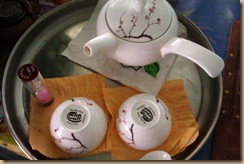

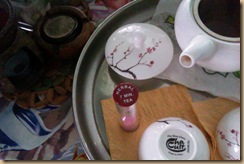






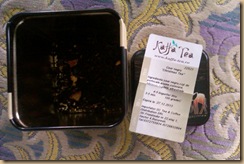
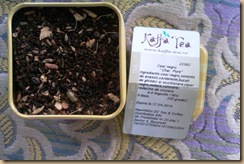
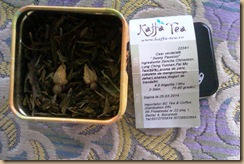

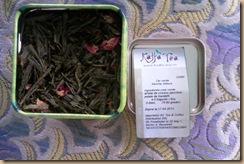
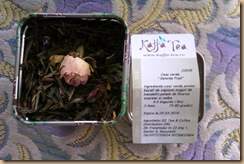
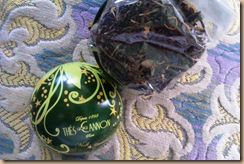
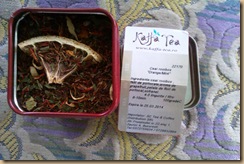
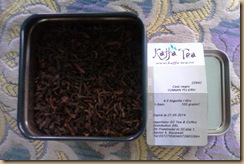
No comments:
Post a Comment